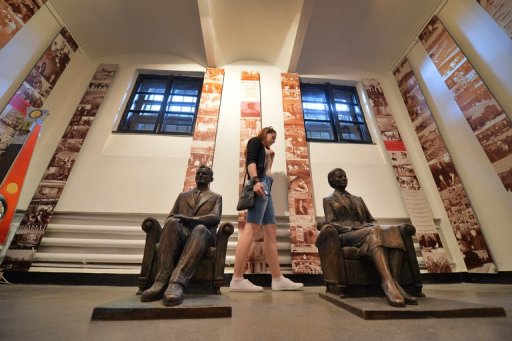The grim barracks where Romania’s brutal communist despot Nicolae Ceausescu and his wife Elena were executed are to be opened to the public in the latest bid to boost “dictator tourism”.
The former military unit at Targoviste, 100 kilometres (60 miles) northwest of Bucharest, is to be turned into a museum and is due to welcome its first visitors in early September.
The death of the Ceausescus became one of the defining images of the revolutions which convulsed eastern and central Europe in 1989.
On December 22, as angry crowds gathered in front of the Communist Party headquarters, they fled the capital Bucharest in a helicopter. It was to be their final journey. They were stopped by the army, detained in Targoviste, and shot after a makeshift trial.
It brought to a grisly end more than 20 years of repressive rule aided by a huge security apparatus, where any free speech was ruthlessly suppressed.
The population suffered from food and power shortages and on top of that, Ceascescu’s rule was marked by nepotism, paranoia and a deeply ingrained personality cult. Wife Elena was seen as the regime’s ‘number two’.
In the barracks, built in 1907, time seems to have stood still since the execution.
The walls are painted a greyish yellow and the iron beds complete with dirty mattresses where the Ceausescus slept have remained there ever since.
The makeshift dock where Nicolae and Elena, dressed in their winter coats, sat listening to the charges against them will be put back in the very place where the couple were tried and sentenced to death.
Outside, the wall against which they were shot just a few minutes later still carries bullet holes.
Footage of the trial and the execution, broadcast all over the world in December 1989 and drawing criticism over the summary judicial proceedings, will run on a black and white TV set.
Sociologist Vasile Dancu said “every nation must acknowledge its history, without trying to hide certain events”.
A group of Swedish tourists has already booked tickets for the museum, Carstina said.
Also on their must-see list is the grandiose Palace of Parliament in the heart of Bucharest.
To erect the building, initially called “House of the People”, Ceausescu ordered the razing of much of the city’s historic district, forcing the relocation of some 40,000 people who lost their homes.
State coffers, meanwhile, foot the bill for the 350,000 square-metre (3.7 million square-foot) structure that was fitted out with enough marble to fill 400 Olympic swimming pools — at a time when Romanians suffered from severe food shortages and regular power cuts.
The palace is now one of Romania’s top attractions. More than 144,000 tourists visited it in 2012, 110,000 of them foreigners.
But Lucia Morariu, head of the local tour operators’ association, felt turning Ceausescu into a tourist brand was not a good idea.
However, in the southern town of Scornicesti, the small, traditional house where Ceausescu was born in 1918 is a major draw for tourists.
The perfectly preserved abode, dating from around 1900, with no running water or electricity, is sporadically opened to visitors by Ceausescu’s nephew Emil Barbulescu, who lives next door.
The 55-year-old former head of the local communist militia does not hide his nostalgia for the “good old days” and says steps have been taken recently to “restore the truth” about his uncle.
Two smartly-dressed women in their fifties, who declined to give their names, stepped down from their SUV, pleased that they could enter Ceausescu’s house.
A man and his wife also stopped their car in front of the house.
But he insisted that the execution remained an open wound in Romania.

COMMENTS
Please let us know if you're having issues with commenting.